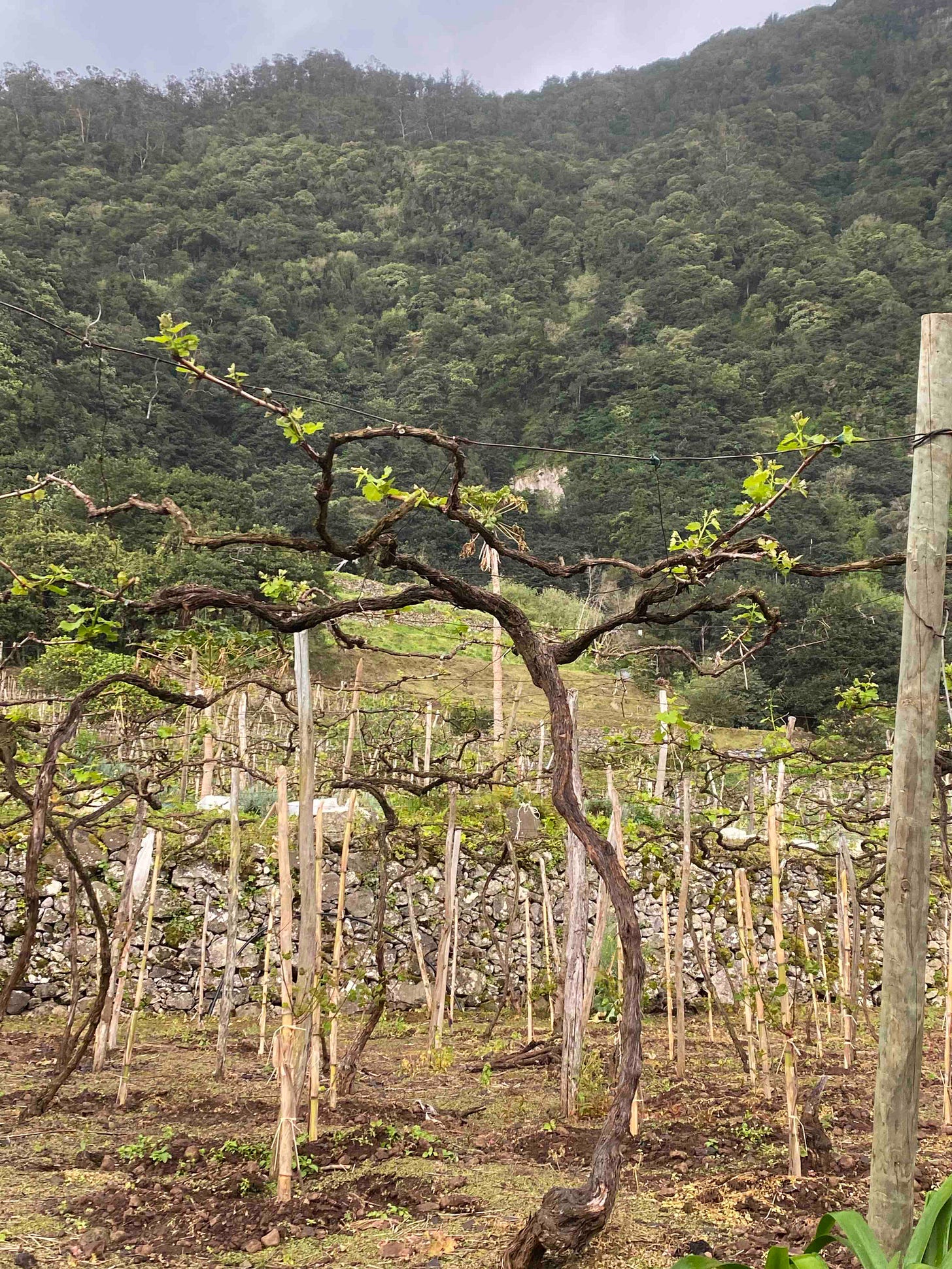You’ve probably already passed a Port and supped an after-dinner glass of Portugal’s most famous fortified wine, but you may have missed out on a Madeira...and it’s time to put that right.
Ana and I recently had a little trip to the autonomous Portuguese island which juts out of the Atlantic three hundred miles off the coast of Africa.
While our wine education is currently all about the Alentejo, we couldn’t explore a new place without learning more about the wine that takes the island’s name.

The only thing more famous to come from the small archipelago is football’s Portuguese living legend Cristiano Ronaldo, who was born there.
Both he and the booze have museums and visitor centres devoted to them and while we gave the “CR7” shrine a miss this trip, we did manage a cellar tour at Blandy’s Lodge in the capital Funchal with thanks to Chris Blandy and Richard Mayson (who’s revised book on Madeira and Port is due out soon).
The Blandy family has been part of the madeira furniture for two hundred years and is today one of the island’s most famous fortified wine producers, but first let’s get into a bit of history.
The secret to Madeira’s success came completely by accident during Portugal’s Age of Discovery at the turn of the 16th century, when every explorer worth his salt was circumnavigating the globe in search of spices, trade and world domination.
A lot of them stopped off in Madeira for water and supplies...and barrels of wine soon became de-rigueur for the long sea voyages.
Legend has it that for some strange reason a few barrels sailed to India and back without being drunk, and the producer realised the wine’s quality had improved dramatically on its round trip...after being exposed to tropical heat while crossing the equator four times.
For the centuries that followed, ocean-going vessels in need of ballast took a lot of booze on a lot of very long journeys coining the name vinho da roda (round-trip wine).
Madeira and Port from the Douro mountains of the mainland both owe their fortification to the sea – adding brandy helped keep alcohol levels high and stabilised wine that was often tossed around in the bottom of a boat.
Strong alcohol is still added to this day – either to interrupt grape fermentation to kill the yeast and leave lots of sugar, or when fermentation’s almost finished to make a drier wine.
The variety of grape also often indicates what kind of Madeira you’ll get, from aperitif dry to dessert sweet – check out this great food pairing chart.
But the key difference between Madeira and Port is the heat-treatment, which gives Madeira greater longevity – both to sit in a cellar, or to remain drinkable for months after you first pop the cork.
While Port needs to be stored on its side with the wine in contact with the cork, you can keep Madeira wine in the basement upright – it doesn’t age in the bottle – but make sure it’s at a constant temperature and low light.
And try drinking a fancy vintage port more than a day or two after opening it and you’ll be sorely disappointed...good to share with friend because if you open it you’d better finish it!

These days it doesn’t take months on board a ship to age the wine in heat – winemakers have less inconvenient options.
Blandy’s uses the estufagem method for its younger wines – gently warming stainless steel tanks up to 45C over four months before putting the wine in Brazilian satinwood vats for a couple of years.
The finest Madeiras are aged through the canteiro system: in large American oak casks left in the lofts to be naturally warmed by the Madeiran sun for at least four years to slowly oxidise and turn a deeper amber colour.

Each canteiro barrel has a year and a grape name inscribed on the side: usually either Sercial, Verdelho, Bual and Malvasia on a scale of dry to sweet.
There are no indigenous Madeiran grapes, so all were brought from the mainland – and by far the most common variety is now the Tinta Negra which accounts for more than 80% of the grapes grown on the island.
We visited the vineyards which are mostly on the more weathered northern coast and were surprised to see how they grow – high up on trellises above head height.
The biggest threat to grapes on Madeira, we were told, is moisture and the vines can avoid mildew and dampness if there’s enough air circulating beneath them.

But the big discovery was the old method for crushing the grapes – why use your feet when you can use a huge tree trunk and a pile of old rope?
Madeira is the Portuguese word for wood after all, so go figure.
We were staying a night in São Jorge which just happens to be home to the Museu do Vinho e Vinha – the wine and vine museum – and we got a full explanation of both that and how grape juice used to be carried over the mountains to the producers using goat-skin sacks.
Madeira really is a great island to visit – to wander the historic old streets of the capital Funchal, to hike some of the many miles of old levada paths alongside old irrigation ditches which brought water down from the mountains to the coast.
And of course try some Madeira wine: we had a two hour tour of the winery and tasting at Blandy’s Lodge and would highly recommend it.
We loved the dry almost more than the sweet – but it’s a drink that can work before or after a meal.
Oh, and if you’re keen to read more about Madeira, I’ve written more about it on my other blog Off-Grid and Ignorant in Portugal – do check it out and sign up for updates if you haven’t already.










Loving this series!